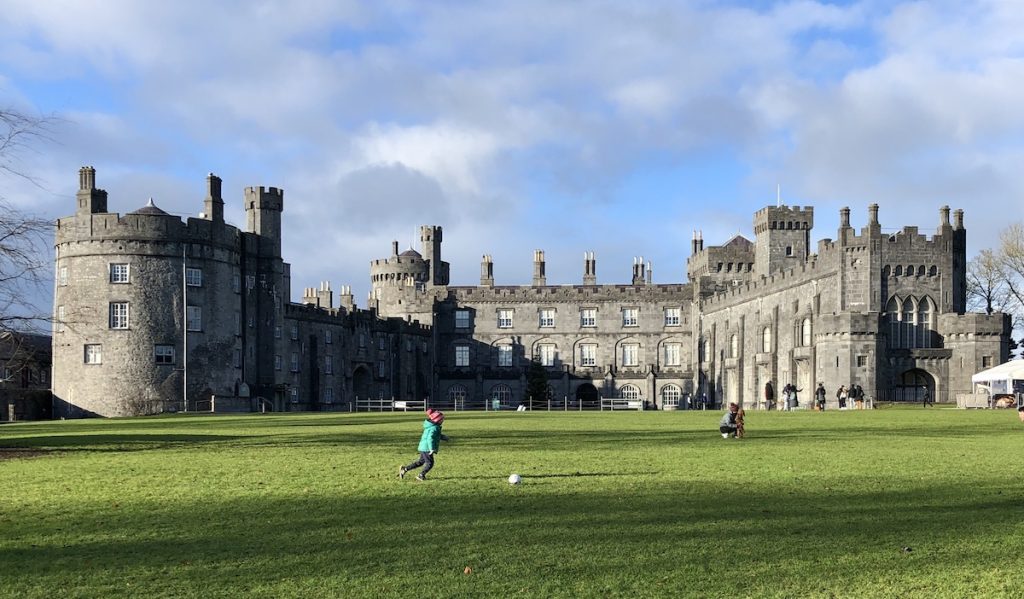
“It’s smaller than I thought.”
That’s a phrase no one wants to hear, particularly men, but I was talking about the castle we’d driven across Co. Tipperary to see.
The photos I’d seen were so imposing that I guess I just expected its rooms to go on and on. Inside, it felt more like a very large country house than a fortress.
Of course, size is relative. As my dad used to say, “It’s not how deep you fish, it’s how you wiggle your worm.” And as far as worms go, this castle did some memorable wiggling.
Kilkenny Castle was built in 1195 to control an important route junction and ford on the River Nore. Its massive ditch and corner towers would have been an important element of the defences of the medieval town that grew up around it.
The first — probably wooden — castle was built by Richard de Clare (‘Strongbow’), 2nd Earl of Pembroke, soon after the Norman conquest of Ireland, and it remained an important symbol of that occupation.
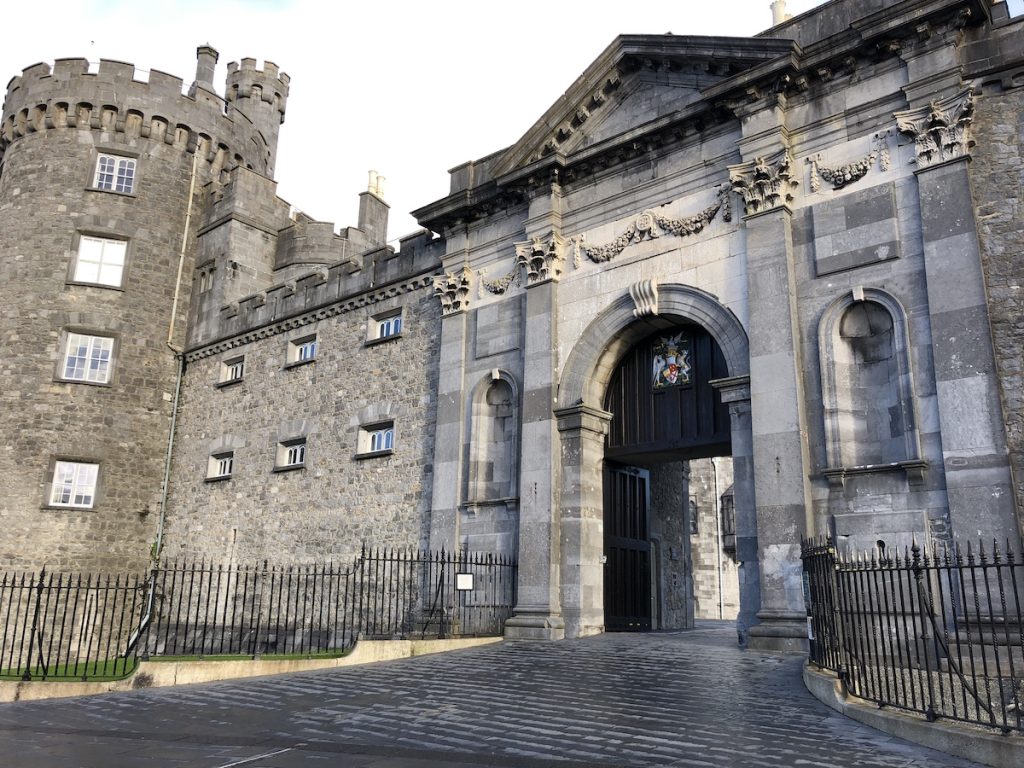
The structure was rebuilt many times over a period of 800 years, adapted and extended to meet changing needs.
It is most closely associated with the wealthy Butler family of Ormonde, who came to Ireland with the Norman invasions. James Butler bought Kilkenny Castle in 1391, and the family ruled the surrounding area for centuries.
Like size, wealth is also relative, and the riches that supported castles and massive country houses in Ireland and England for centuries could no longer keep up to an industrial age, with its decline in the domestic agricultural market, death duties, economic depression, rising taxes and the cost of living.
As happened to so many other families of the landed aristocracy, both the rental incomes and the investment income that the Butler fortune depended on went into free fall.
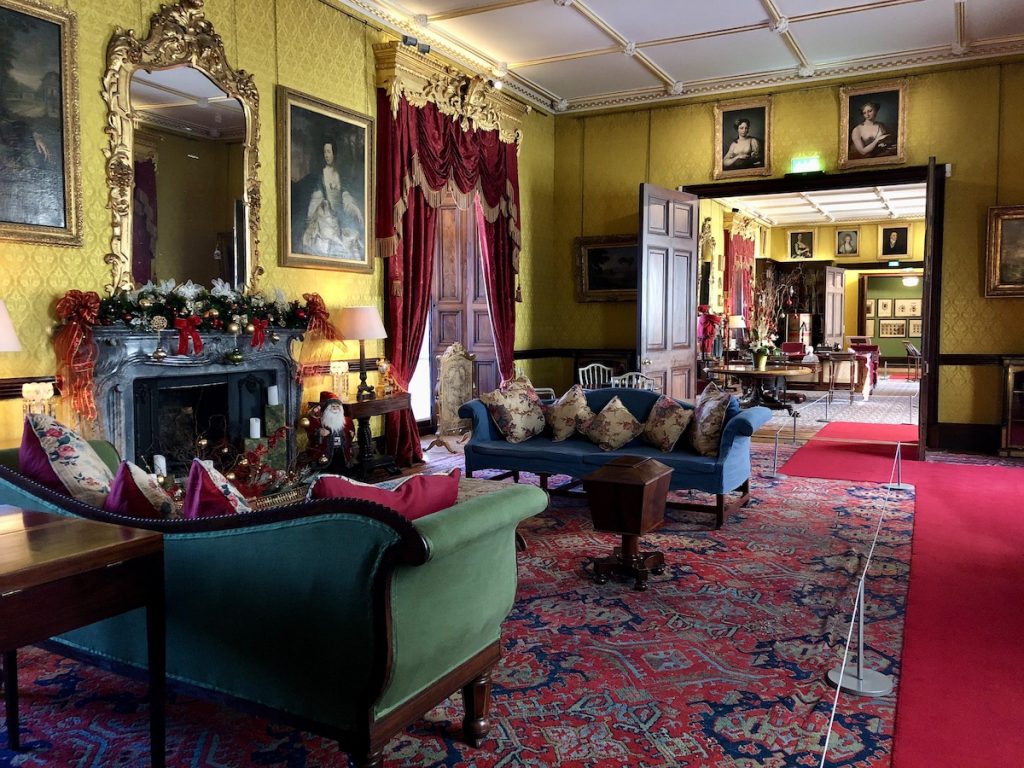
Kilkenny Castle had become run down by the 18th century. Attempts were made to restore it with new wealth brought into the clan through marriage. The north wing was rebuilt in the 19th century, and the south curtain wall extended.
But the changing times could not be held off forever. George Butler, Earl of Ossory, finally sold the castle’s contents for £6,000 in 1935 and moved to London, abandoning Kilkenny for 30 years.
This once-noble structure was inherited by Arthur Butler, 6th Marquess and 24th Earl of Ormonde, in 1949. In 1967, he sold Kilkenny Castle to the Castle Restoration Committee for the people of Kilkenny for a token £50.
“The people of Kilkenny, as well as myself and my family, feel a great pride in the Castle,” he said, “and we have not liked to see this deterioration. We determined that it should not be allowed to fall into ruins. There are already too many ruins in Ireland.”
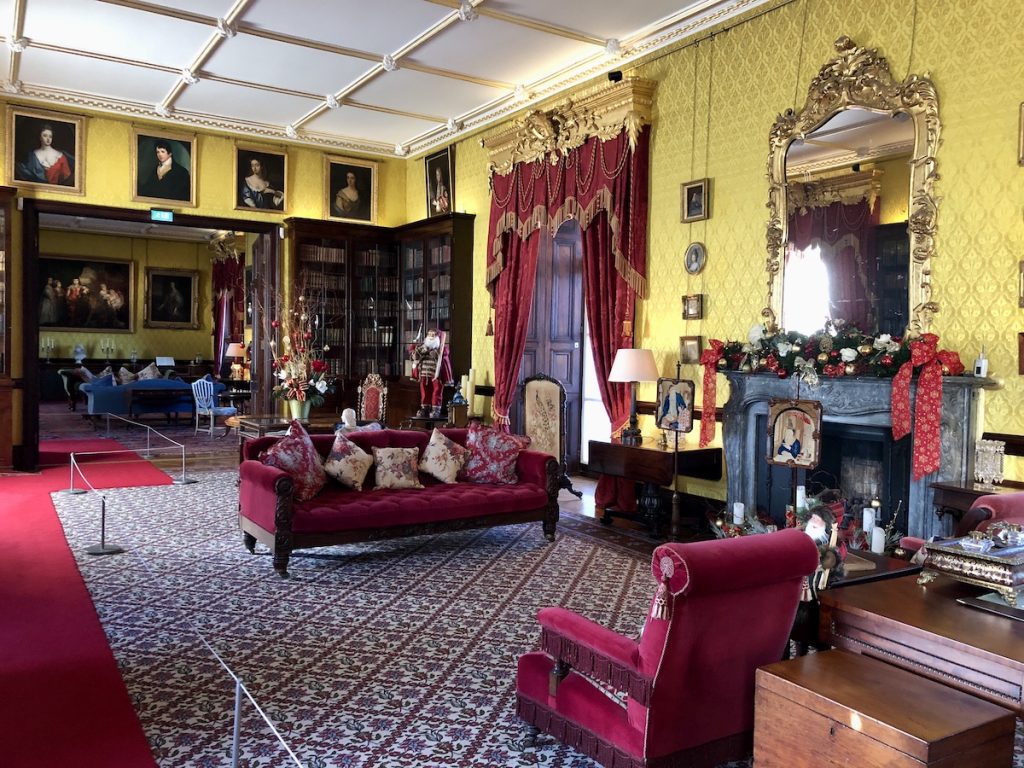
The castle we’re lucky enough to wander through today is a Victorian remodelling of the 13th century defensive castle, complete with imposing grey stone turrets and surrounding acres of parkland once scattered with stags and now pounded by lycra-clad joggers.
I wandered its withdrawing rooms, dining halls and bedrooms at my own plodding pace, peering into every corner while imagining myself as its sole occupant.
In such places, I am a great haunter of libraries, a connoisseur of wood panelled walls, a searcher out of secret passageways, and a scanner of book spines. The volumes here were evidently bought by lot as part of the restoration; I spotted several copies of the same novels over and over, most of which I had read.
I like a stout floor globe, but none were present. Instead, I spotted an outdated device called a ‘pillar zogroscope’. Popular in the second half of the 18th century, these convex lenses in square wooden frames magnified prints so they could be seen with enhanced depth. Their popularity suggests people with an overabundance of free time.
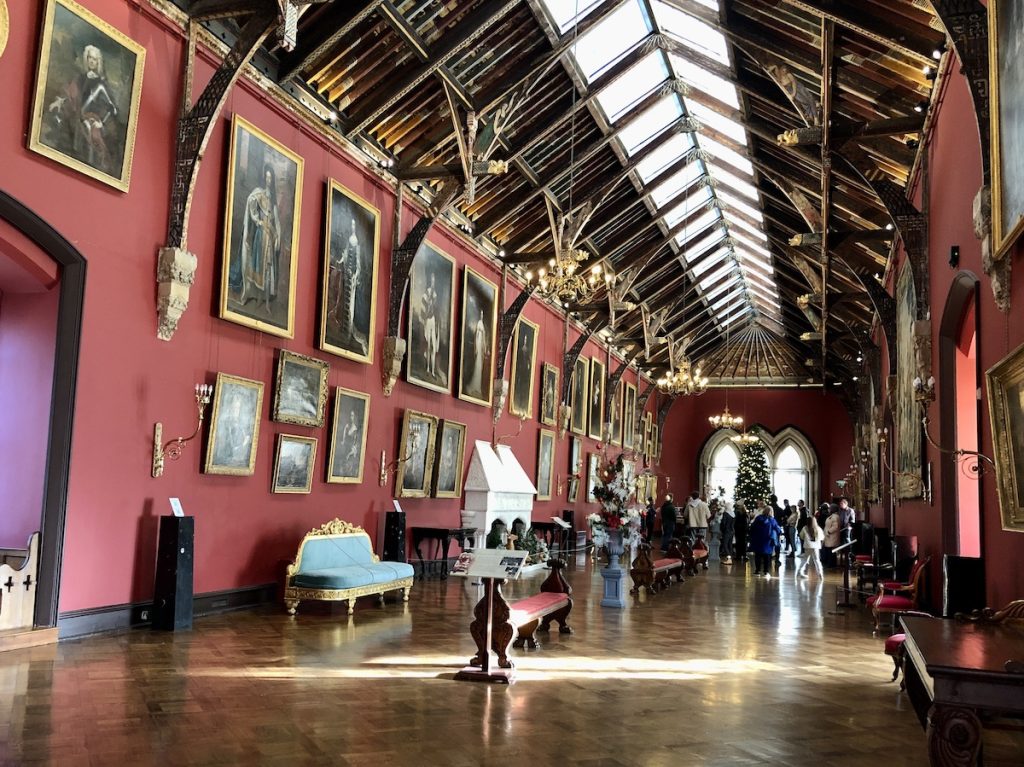
The Moorish staircase with its arched pillars and carved foliage finally deposited us in the Picture Gallery, the last room we were able to see.
After circumambulating the castle by way of the riverside and the formal garden, we took a stroll through medieval Kilkenny town, with its narrow covered passageways — ‘slips’ — and cobbled alleys.
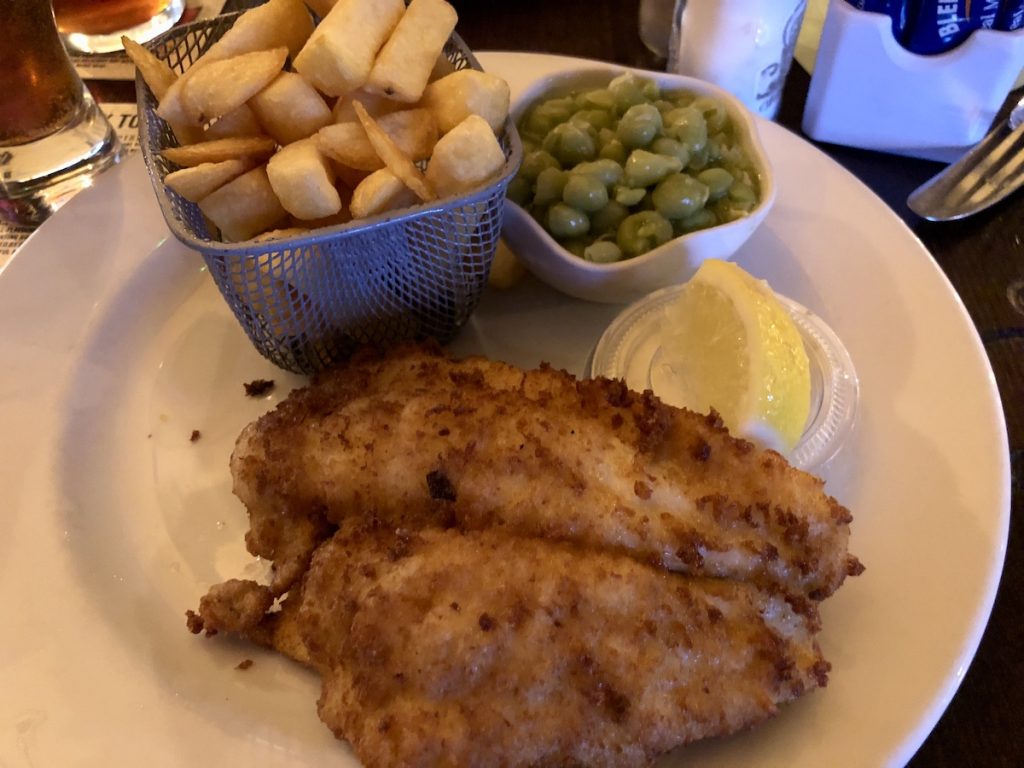
We had just enough time for a perfect plate of fish and chips with mushy peas, and a lovely pint of Kilkenny Ale. I’d only sampled this wonderful beer in bottles, and the draft was an entirely different beast, with a thick creamy head and a body that caresses the palate, with none of the bottled carbonation I’d come to expect.
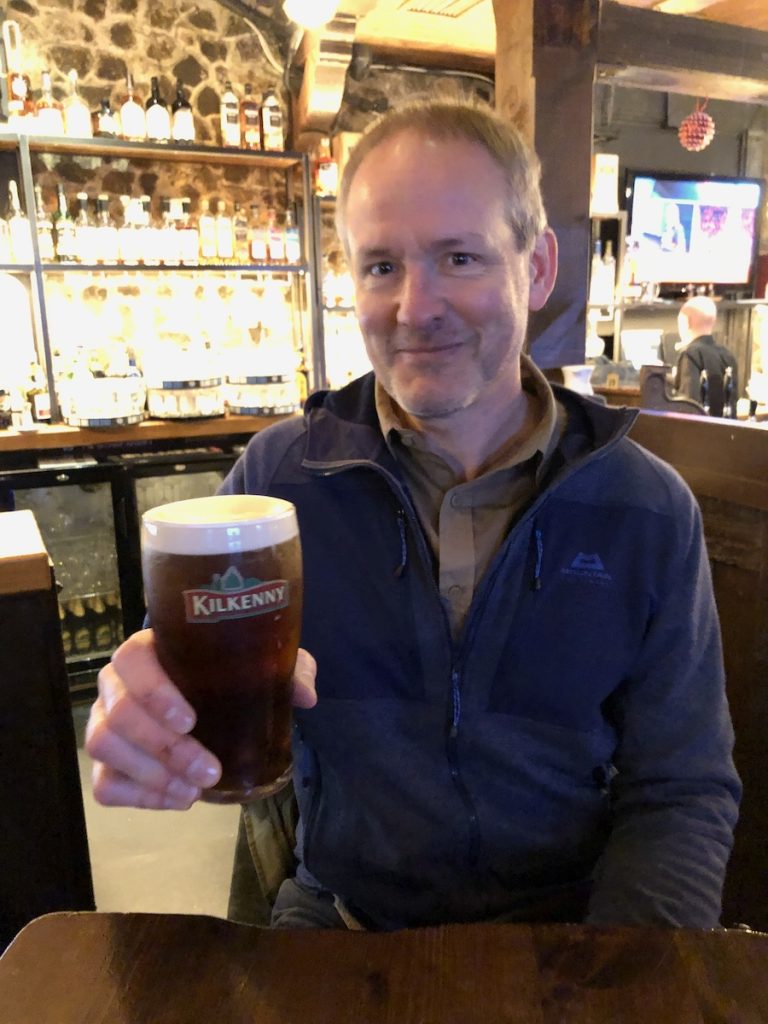
It made me wish we could spend a couple more days there discovering the alleys and surrounding countryside, and drinking a few more pints of this beer.
But Dublin was calling. And that’s where we’ll wrap this series up next week, with a lot of bars and bookshops and a surprising victory for your humble scribe in a contest of wits. Stay tuned.
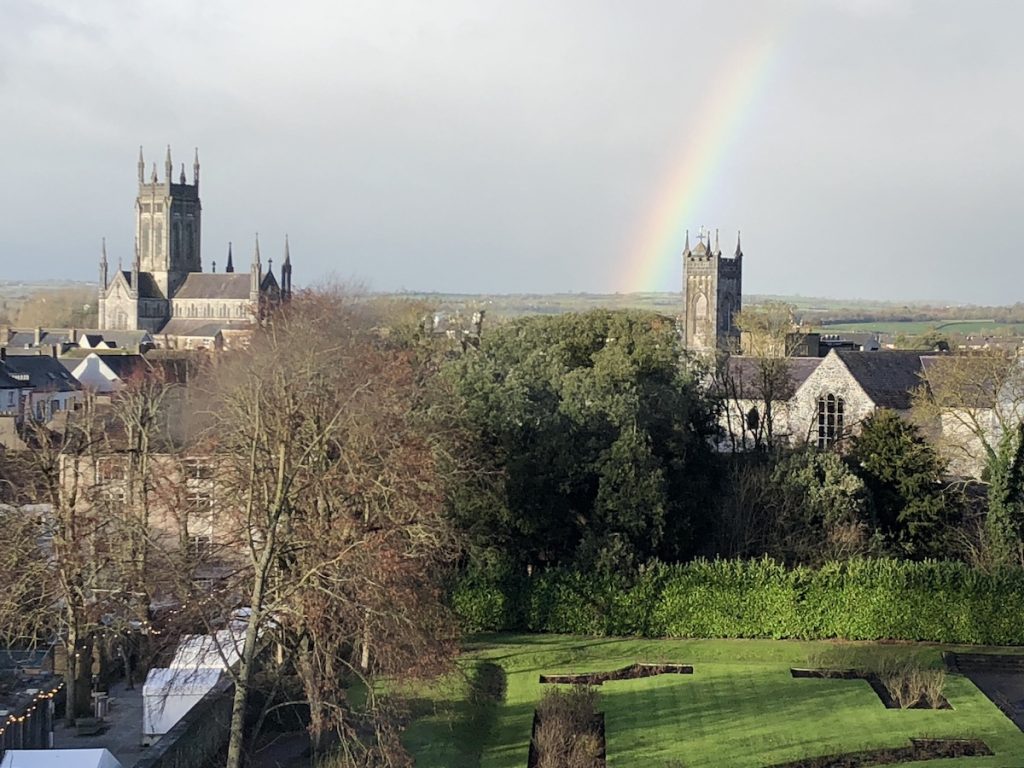
Photos ©Tomoko Goto 2022
